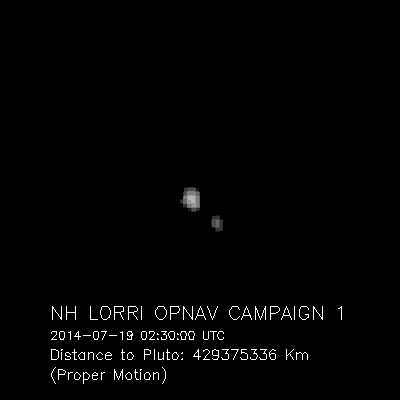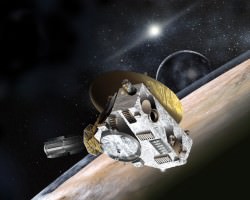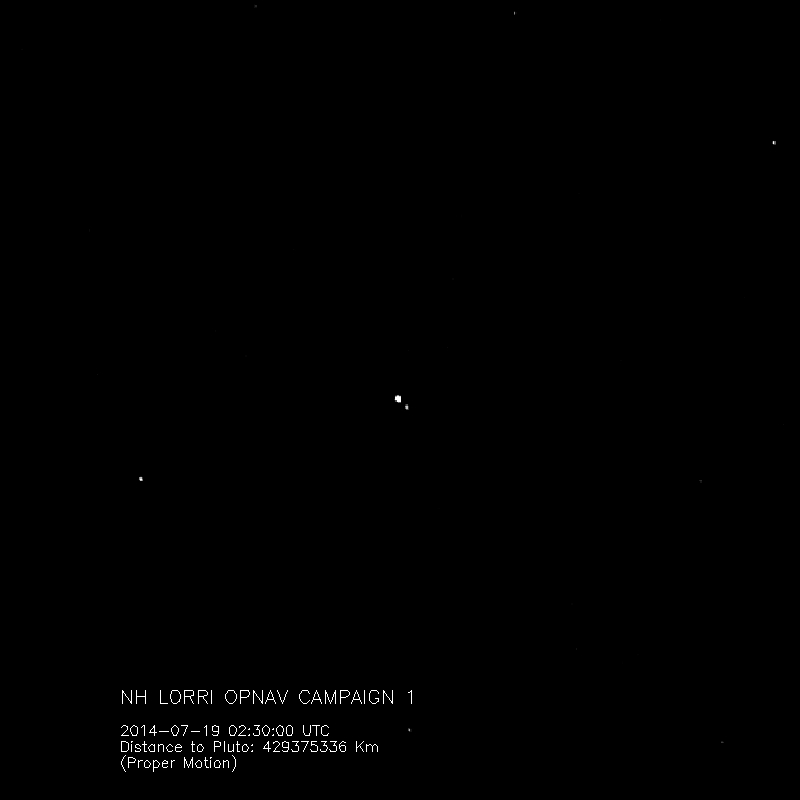Now here’s something I guarantee you’ve never seen before: a video of the dwarf planet Pluto and its largest moon Charon showing the two distinctly separate worlds actually in motion around each other! Captured by the steadily-approaching New Horizons spacecraft from July 19–24, the 12 images that comprise this animation were acquired with the Long Range Reconnaissance Imager (LORRI) instrument from distances of 267 million to 262 million miles (429 million to 422 million km) and show nearly a full orbital rotation. Absolutely beautiful!
For a close-up video of the two worlds in motion, click below:

Pluto and Charon are seen circling a central gravitational point known as the barycenter, which accounts for the wobbling motion. Since Charon is 1/12th the mass of Pluto the center of mass between the two actually lies a bit outside Pluto’s radius, making their little gravitational “dance” readily apparent.
(The same effect happens with the Earth and Moon too, but since the barycenter lies 1,700 km below Earth’s surface it’s not nearly as obvious.)
“The image sequence showing Charon revolving around Pluto set a record for close range imaging of Pluto—they were taken from 10 times closer to the planet than the Earth is,” said New Horizons mission Principal Investigator Alan Stern, of the Southwest Research Institute. “But we’ll smash that record again and again, starting in January, as approach operations begin.”

Launched January 19, 2006, New Horizons is now in the final year of its journey to the Pluto system. On August 25 it will pass the orbit of Neptune – which, coincidentally, is 25 years to the day after Voyager 2’s closest approach – and then it’s on to Pluto and Charon, which New Horizons will become the first spacecraft to fly by on July 14, 2015, at distances of 10,000 and 27,000 km respectively. Find out where New Horizons is right now here.
Source: New Horizons
Credit: NASA/Johns Hopkins University Applied Physics Laboratory/Southwest Research Institute


Nice asteroids.